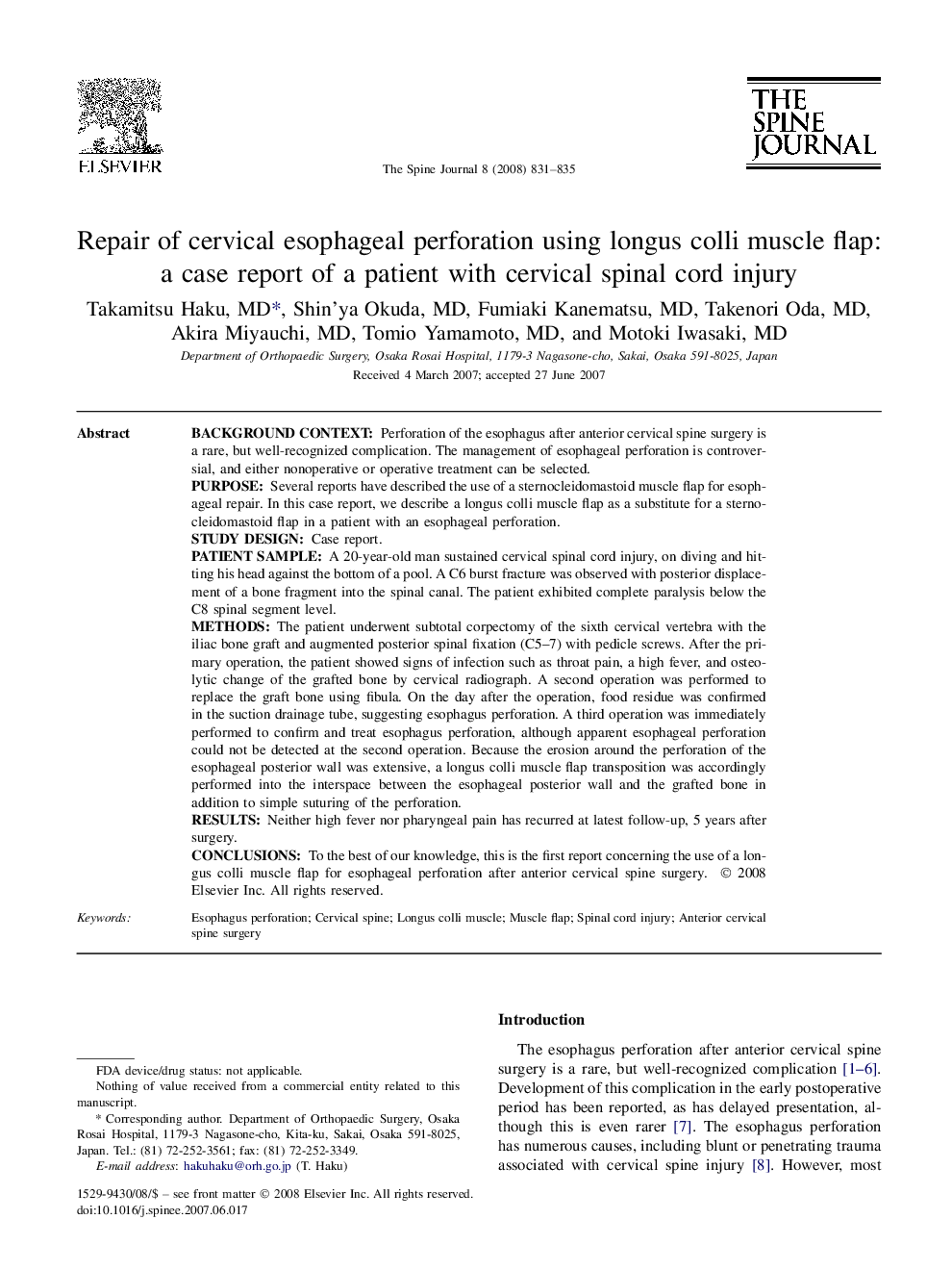| Article ID | Journal | Published Year | Pages | File Type |
|---|---|---|---|---|
| 4099931 | The Spine Journal | 2008 | 5 Pages |
Background contextPerforation of the esophagus after anterior cervical spine surgery is a rare, but well-recognized complication. The management of esophageal perforation is controversial, and either nonoperative or operative treatment can be selected.PurposeSeveral reports have described the use of a sternocleidomastoid muscle flap for esophageal repair. In this case report, we describe a longus colli muscle flap as a substitute for a sternocleidomastoid flap in a patient with an esophageal perforation.Study designCase report.Patient sampleA 20-year-old man sustained cervical spinal cord injury, on diving and hitting his head against the bottom of a pool. A C6 burst fracture was observed with posterior displacement of a bone fragment into the spinal canal. The patient exhibited complete paralysis below the C8 spinal segment level.MethodsThe patient underwent subtotal corpectomy of the sixth cervical vertebra with the iliac bone graft and augmented posterior spinal fixation (C5–7) with pedicle screws. After the primary operation, the patient showed signs of infection such as throat pain, a high fever, and osteolytic change of the grafted bone by cervical radiograph. A second operation was performed to replace the graft bone using fibula. On the day after the operation, food residue was confirmed in the suction drainage tube, suggesting esophagus perforation. A third operation was immediately performed to confirm and treat esophagus perforation, although apparent esophageal perforation could not be detected at the second operation. Because the erosion around the perforation of the esophageal posterior wall was extensive, a longus colli muscle flap transposition was accordingly performed into the interspace between the esophageal posterior wall and the grafted bone in addition to simple suturing of the perforation.ResultsNeither high fever nor pharyngeal pain has recurred at latest follow-up, 5 years after surgery.ConclusionsTo the best of our knowledge, this is the first report concerning the use of a longus colli muscle flap for esophageal perforation after anterior cervical spine surgery.
